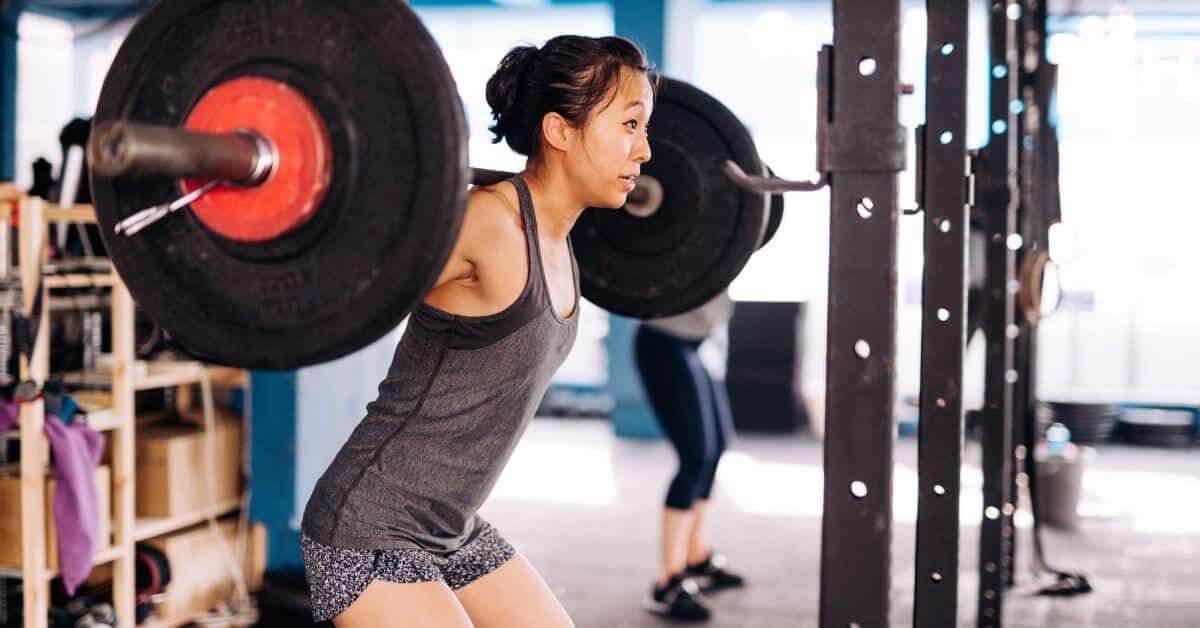A type of training known as “functional strength training” aims to build up muscles in motions that are frequently used in everyday life.
Table of Contents
ToggleThis training method includes free weights, gymnastic movements, and aerobic exercise.
Functional training highlights how this kind of workout helps develop a physique that is better suited for the needs of everyday life, and strength highlights how this type of training creates a body that is more efficient at generating force.
Start Building Your Dream Body Today
Ready to elevate your fitness game without falling into the trap of dull, repetitive routines that just don’t deliver? Imagine sculpting your ideal physique and boosting your health, all while still enjoying life’s pleasures, like those irresistible weekend getaways and your aunt’s legendary cheesecake. With our online fitness and nutrition coaching service, you don’t have to compromise. Dive into a personalized fitness journey that blends perfectly with your lifestyle, not against it. Book your completely free discovery consultation today, and take the first step towards a transformation that doesn’t require giving up the joys of life.

“I was skeptical about online fitness coaching, but Functional Body Savage completely changed my perspective. Vanja and Radomir’s personalized approach and attention to detail have helped me achieve goals I never thought possible. I’m stronger, more confident, and grateful for their guidance.”
Emily Thompson, San Francisco, CA
Learn More About Our Online Coaching ServiceQuick Summary
- Functional strength training focuses on whole-body movements and joints together rather than working a particular muscle or group of muscles independently.
- Functional training involves free weight, aerobic, and gymnastic moves.
- Any age or degree of fitness can begin with bodyweight exercises done in your own house without equipment.
Is Lifting Weights Considered Functional Strength Training?
No, lifting weights is not considered functional strength training. Traditional strength training seeks to improve strength without influencing other systems. Using heavy weights or the high-tech equipment you see at the gym, it works solely on a single muscle at a time until it is exhausted.
“Simply learning to produce force while under a heavy load and on two feet is nonfunctional for most athletes.” – Michael Boyle, Strength and Conditioning and Strength Training Consultant
Lifting weights can be considered a type of functional training only if it is based on movement patterns, full-body exercises, and a full range of motion. It is also important to point out that performing workouts like biceps curls and triceps extensions that isolate particular muscle groups is not a mistake. Squats, deadlifts, bench presses, pull-ups, and rows should be performed first, with these exercises coming at the end of the program as a finishing touch.
What Is Functional Strength Training?
Functional strength training is the type of training that focuses on exercising several muscles and joints together rather than working a particular muscle or group of muscles independently, resulting in an individual being able to perform daily activities with greater ease.
Functional strength training aims to improve performance in terms of fitness level, daily activities, and general health. The objective is to apply what has been learned during this training to activities besides physical activity and fitness. It should positively impact how you live your life and move through it. With these specific training activities incorporating functional strengthening, you should have an easier time walking, getting out of a chair, and picking groceries from your car.
Who Is Functional Strength Training For?
Functional strength training is for everybody. Regardless of fitness level, age, previous exercising history, or training time available, all of us can benefit from functional strength training [1].
Programs for functional training can assist with defining calorie burning, boosting aerobic capacity, and stimulating muscular growth.
The term “functional” indicates how this kind of exercise helps form a body better adapted to daily living demands. The word “strength” highlights how this kind of exercise develops a body that is more capable of producing force.
How to Do Functional Strength Training?
To do functional strength training, your entire body’s large muscle groups should work together. These workouts frequently resemble moves you would perform during the day.
Functional training can help you get better at tasks like carrying groceries, swinging a tennis racket, and picking up heavy items.
Some exercises fall under “functional training,” while others do not.
Bicep curls, calf raises, and bench presses are all traditional strength training movements that are less functional,exercises that concentrate on a specific body component. However, those should be implemented in the regular fitness program too, but they must be balanced out with compound exercises. Also, you should always aim to place compound exercises in the beginning of your workout, and isolation ones at the end. Joint mobility comes first in functional training over appearance.
Beginner Functional Strength Training Workout
Start with this routine if you’re new to strength training or have taken a long break.
You’ll concentrate on the foundations that will help you maintain your functional strength with exercises like squats and pushups.
The following are eight excellent exercises for beginners:
1. Weighted Push-ups

Push-ups with added weight have a higher level of difficulty. By wearing a weighted vest or resting a weight plate on your upper back, you can add weight to the standard bodyweight workout to assist develop your shoulders, chest, triceps, and core.
How to Perform a Weighted Push-up
- Place your hands and knees in the push-up position.
- The weight is placed on your back by reaching behind you.
- To perform a push-up, carefully spread your legs out. Push-ups are performed.
- To relieve the pressure on your back, get back into a tabletop or push-up position on your knees.
2. TRX Rows
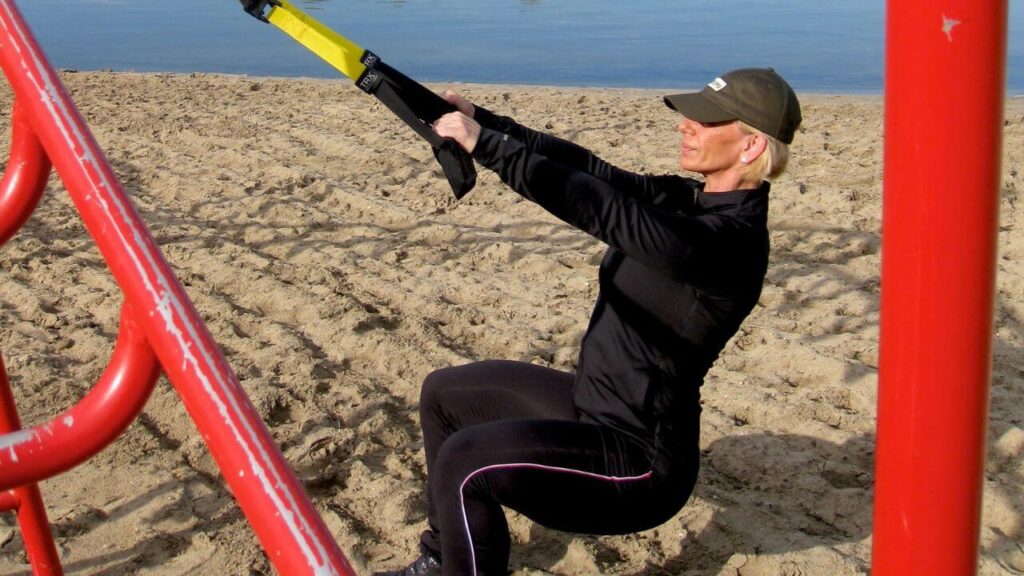
The lats, rhomboids, and traps are the main back muscle groups targeted by the TRX row, together with the shoulders and core.
How to Perform TRX Rows
- With your hands facing each other and a TRX handle or ring in each hand, stand with your feet hip-distance apart.
- Walk your feet forward until your body is straight, your arms are completely extended, and your torso is at a 45-degree angle to the floor. Step your feet forward so that your shoulders are closer to the ground to make this more difficult. The body would be practically parallel to the floor in the more evolved variant.
- Bending your elbows behind you while keeping them close to your body and bringing your chest toward your hands while maintaining a stable core and straight legs with your feet or heels on the ground.
- As you lower your torso, extend your arms straight to complete one rep.
3. Standing Dumbbell Overhead Press
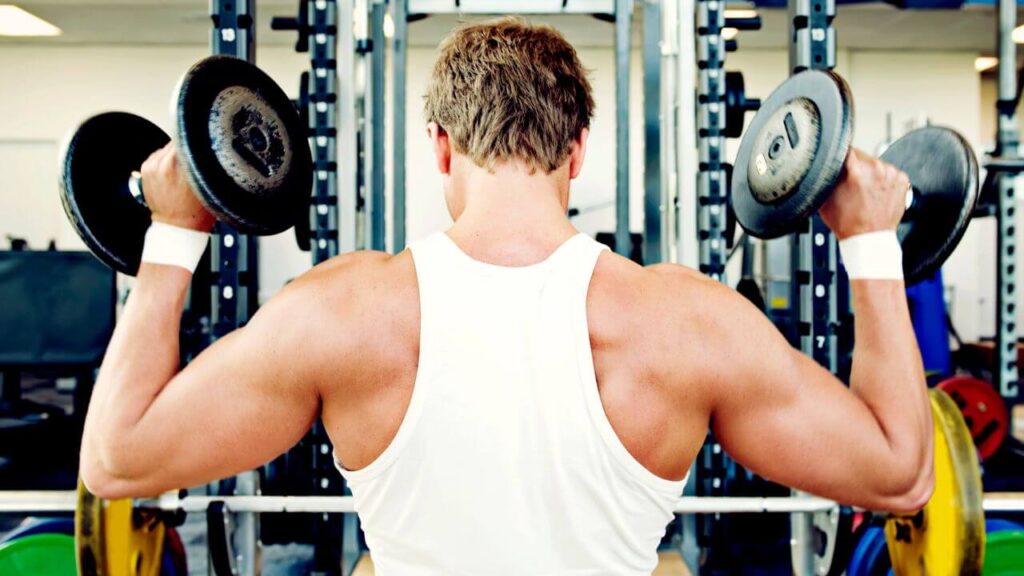
Dumbbell overhead press belongs to the vertical push movement patterns. It activates muscles such as the medial deltoid, anterior deltoid, triceps, and rotator cuff muscles.
How to Perform a Standing Dumbbell Overhead Press
- Exhale as you steadily raise the weights above your head.
- At the peak of the motion, pause briefly.
- Dumbbells are brought back to the shoulders by inhaling.
4. Pull-up
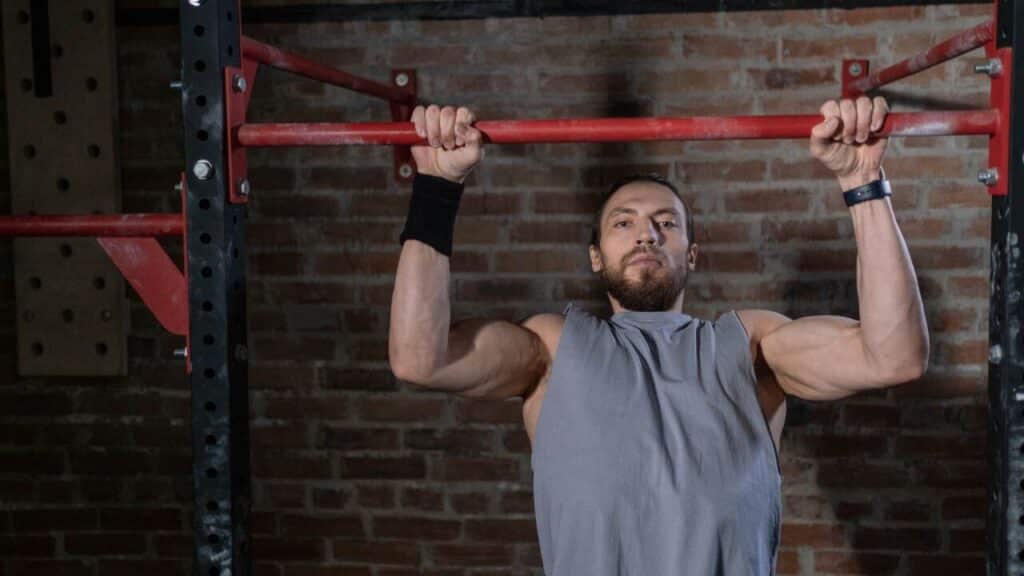
Pull up is an excellent exercise that belongs to a vertical pull movement pattern. It activates muscles such as your lats and biceps.
How to Perform a Pull up
- Start by placing your hands on the bar with your palms facing front and about shoulder-width apart.
- Extend your chest and slightly bend your back while lifting your arms.
- While exhaling, pull yourself up toward the bar until the bar is at chest height.
- While inhaling, slowly return to the beginning position.
5. Front Plank
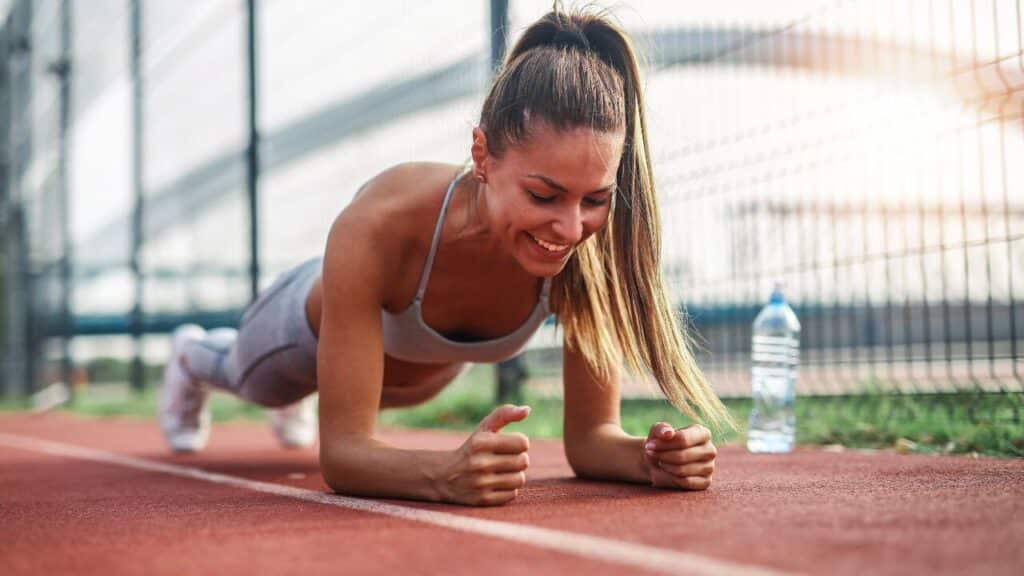
Front plank is an exercise that belongs to anti-lateral flexion movement patterns. It activates muscles such as erector spinae, rectus abdominis (abs), and transverse abdominis.
How to Perform a Front Plank
- Start face down in a plank position with your forearms and toes on the ground. Your forearms are facing forward, and your elbows are directly under your shoulders.
- Draw your navel toward your spine by contracting your abdominal muscles. Your body should remain straight from your ears to your toes, with no bending of the torso. The neutral spine posture is shown here. Check that your shoulders are relaxed and not rising toward your ears.
- For ten seconds, maintain this posture. Drop to the ground.
- Work your way up to 60 seconds over time and more.
6. Side Plank
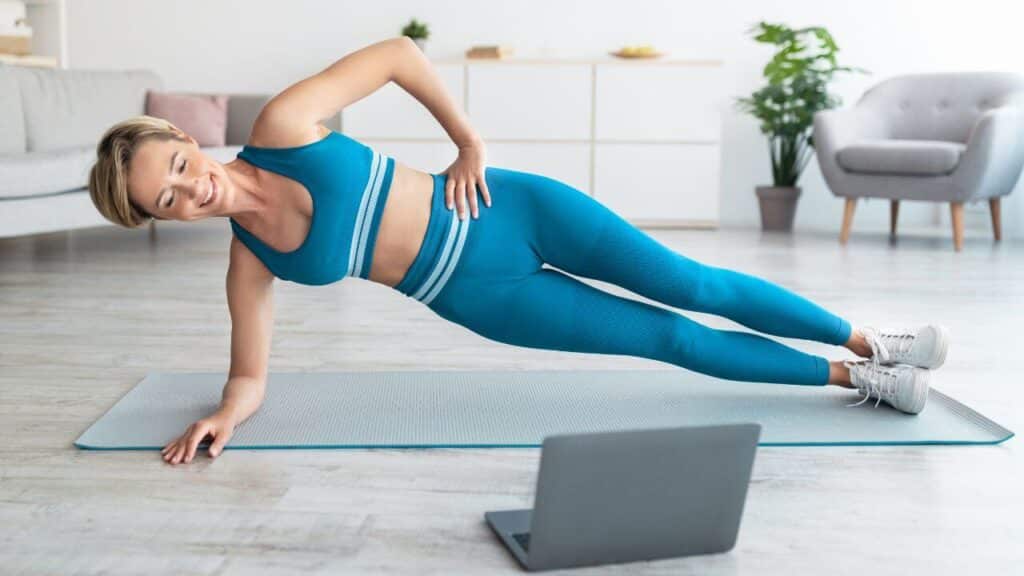
Side plank is an exercise that belongs to anti-lateral flexion movement patterns. It activates muscles such as your obliques.
How to Perform a Side Plank
- To bring your navel closer to your spine, contract your abdominal muscles.
- Exhale as you raise your knees and hips off the mat. There is no slumping or bending in your torso, which is straight. Hold the position.
- Inhale after a few breaths, then push yourself back to the beginning position. The target time should be 1 minute. Swap sides and do it again.
7. Rear Foot Elevated Split Squat
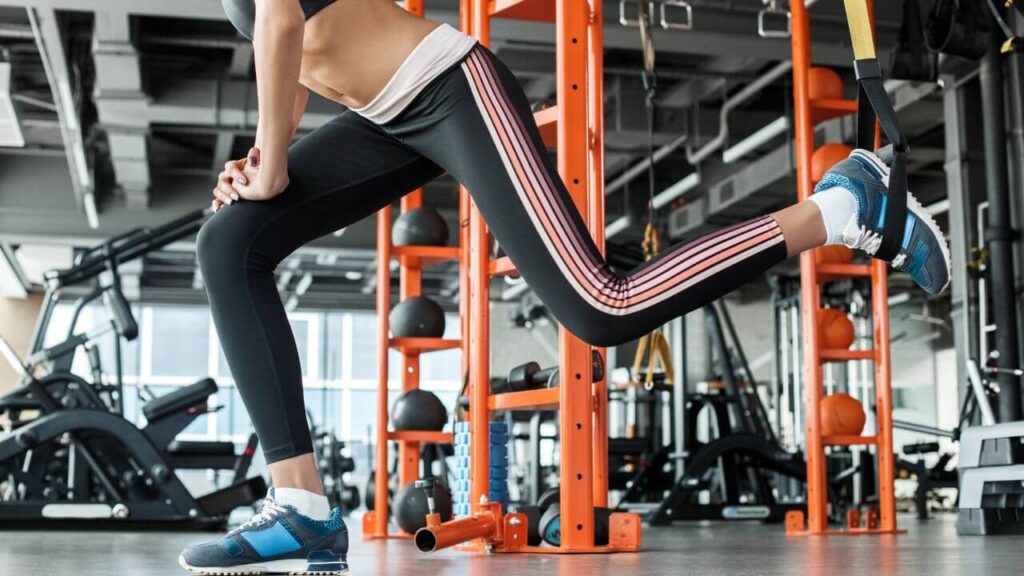
Rear foot elevated split squat is great for lower-body unilateral movement. It activates muscles such as glutes and quads.
How to Perform a Rear Foot Elevated Split Squat
- Increase foot spacing in the starting posture until your front knee is directly over your ankle and your thigh is parallel to the ground in the lunge position.
- When the back knee touches the ground, widen your beginning stance so that your rear knee is one to two inches above the floor when you are in the lunge posture.
- Reduce the weight on the bar for subsequent sets if your torso tilts forward. Tight quads and hip flexors may be to blame for this.
- Lower the weight on the bar for the following sets if the bar tilts during a lunge. To keep your balance, fix your gaze on a particular wall area.
8. Single Leg Deadlift
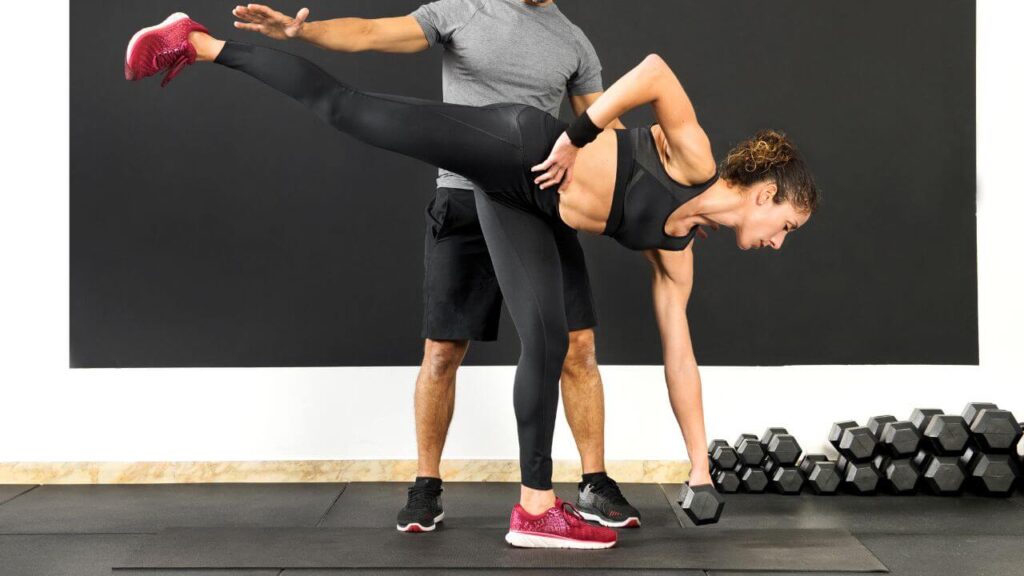
Single leg deadlift is a great exercise that belongs to deadlift movement patterns. It activates muscles such as the glutes, hamstrings, lower back, and core muscles.
How to Perform a Single Leg Deadlift
- Start by standing with your feet parallel and hip-width apart. In front of you, hold a kettlebell in your hands.
- Leaning forward with your hips, place all your weight on one leg as the other engages and begins to extend behind you.
- Lift the extended leg after your body is in a position that creates a “T” shape. Your arms must be hanging straight down while you are holding the weight. Maintain a slight bend in your standing leg.
- Slowly return to your starting posture with your extended leg. Do the same with the other leg.
Consider reading:
FAQs
What Is the Difference Between Functional Training and Weight Lifting?
The difference between functional and weight lifting training is that functional training encompasses a breadth of more dynamic and full-body movements that prioritize compound movements over-focusing on one muscle at a time on a machine. You’re training your body as a single unit with functional movements.
What Exercises Count as Functional Strength Training?
Exercises that count as functional strength training are the following:
- Walking lunges
- Push-ups
- Jump squats
- Jumping onto an elevated surface
- Bodyweight squats
- Planks
- Jumping jacks
- Movements while balancing on one leg
All of these exercises work multiple muscles or muscle groups together.
Do You Use Weights With Functional Training?
Yes, you use weights with functional training. Functional training involves free weight, aerobic, and gymnastic moves.
Is It Too Late to Start With Functional Training?
If you’re starting your fitness journey or feel like it’s too late to try something new, don’t let functional strength training intimidate you.
Any age or degree of fitness can begin with bodyweight exercises done in your own house without equipment.
Comment which is your favorite exercise out of these eight.
Start Building Your Dream Body Today
Ready to elevate your fitness game without falling into the trap of dull, repetitive routines that just don’t deliver? Imagine sculpting your ideal physique and boosting your health, all while still enjoying life’s pleasures, like those irresistible weekend getaways and your aunt’s legendary cheesecake. With our online fitness and nutrition coaching service, you don’t have to compromise. Dive into a personalized fitness journey that blends perfectly with your lifestyle, not against it. Book your completely free discovery consultation today, and take the first step towards a transformation that doesn’t require giving up the joys of life.

“I was skeptical about online fitness coaching, but Functional Body Savage completely changed my perspective. Vanja and Radomir’s personalized approach and attention to detail have helped me achieve goals I never thought possible. I’m stronger, more confident, and grateful for their guidance.”
Emily Thompson, San Francisco, CA
Learn More About Our Online Coaching ServiceReferences:
- https://www.mdpi.com/2071-1050/13/3/1074

